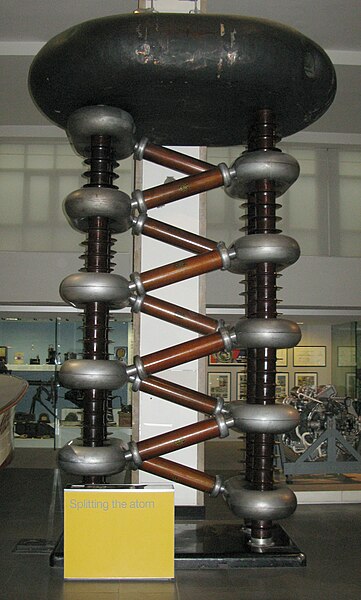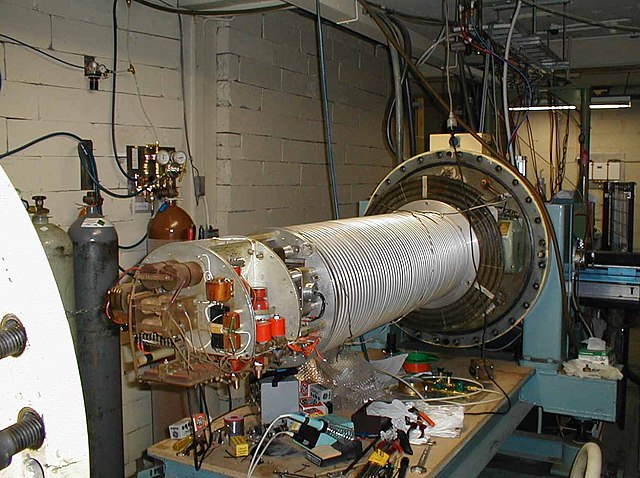Synchrotron radiation is the electromagnetic radiation emitted when relativistic charged particles are subject to an acceleration perpendicular to their velocity. It is produced artificially in some types of particle accelerators or naturally by fast electrons moving through magnetic fields. The radiation produced in this way has a characteristic polarization, and the frequencies generated can range over a large portion of the electromagnetic spectrum.
Messier 87's astrophysical jet, HST image. The blue light from the jet emerging from the bright AGN core, towards the lower right, is due to synchrotron radiation.
The bluish glow from the central region of the Crab Nebula is due to synchrotron radiation.
Pictorial representation of the radiation emission process by a source moving around a Schwarzschild black hole in a de Sitter universe.
A particle accelerator is a machine that uses electromagnetic fields to propel charged particles to very high speeds and energies, and to contain them in well-defined beams.
The Tevatron (background circle), a synchrotron collider type particle accelerator at Fermi National Accelerator Laboratory (Fermilab), Batavia, Illinois, USA. Shut down in 2011, until 2007 it was the most powerful particle accelerator in the world, accelerating protons to an energy of over 1 TeV (tera electron volts). Beams of protons and antiprotons, circulating in opposite directions in the rear ring, collided at two magnetically induced intersection points.
Beamlines leading from the Van de Graaff accelerator to various experiments, in the basement of the Jussieu Campus in Paris.
A Cockcroft–Walton generator (Philips, 1937), residing in Science Museum (London).
A 1960s single stage 2 MeV linear Van de Graaff accelerator, here opened for maintenance







